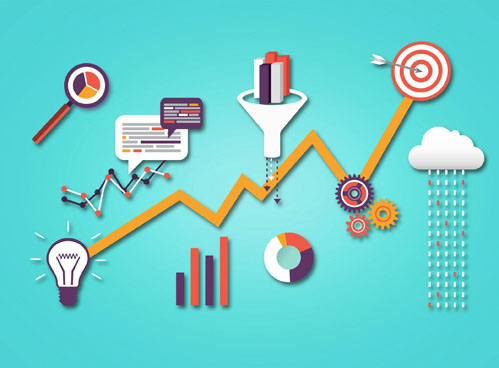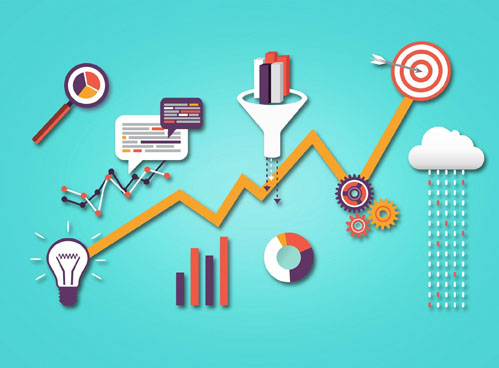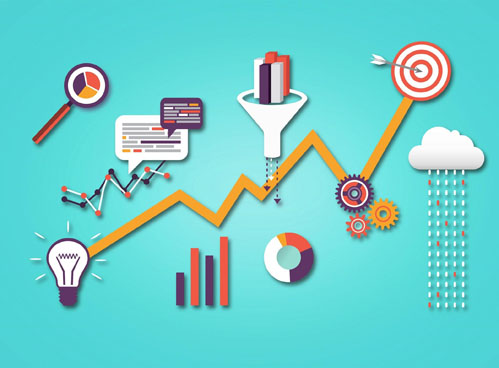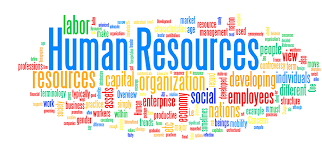‘Big Data’ and associated technologies have been penetrating the business world at a rapid pace. The explosion of huge data volumes growing at an exponential speed has the potential to bring business value for a wide range of industries. Considering, the speed at which data is budding up, it is predicted that by the year 2020, 1.7 megabytes of new information will be created every second for every human being on the planet.
Health care, hotels, manufacturing, management to financial firms are consuming potential of data and analytics and emerging technologies to drive game-changing business results. And taking into account, the rising number of frauds and risks associated with customer’s data; many financial firms have started to take the leverage of big data which is enabling them to serve multiple purposes. The proliferation of data has opened up new business opportunities for financial firms. This pool of data emerging every day, every minute is enabling not just financial firms but also, other small to mid-sized enterprises to enhance their customer service level and add potential to their overall business functioning.
Train your agents
Contact centers are beginning to tap into the vast resource of recorded calls by analyzing them after the fact to identify not just keywords and phrases but also emotion and sentiment in the caller’s tone of voice. This can provide agent-specific information that can be used in coaching, as well as more generic information that can be used to improve overall training in general. The success or difficulty that specific agents demonstrate with various types of calls can also be translated into call routing that better matches skills sets to customer context or needs.
Customer insight
Once companies obtain information about the specific preferences of their customers, they can provide personalized service. As such, in order to be effective, agents must have access to customer information such as their previous interactions, support requests, emails and notes, as well as data from CRM, Helpdesk, and back office solutions, Facebook, Twitter and LinkedIn directly in their call center software interface. This will allow agents to personalize their conversations according to the caller’s unique characteristics in an effort to increase interaction quality.
Data analysis
It is one thing to have data, but it’s another to actually put it to good use. In order to make the best use of your data, your analysts should work with data experts to develop solid conclusions that will help drive decision-making. This should include optimizing your customer segmentation and customer journey mapping, as well as developing a comprehensive understanding of which agents are best suited to handle certain calls. To improve the customer experience, your call center will need to account for customer data that is both quantitative and qualitative. Doing so will put them on the fast track to understanding your customers, providing this information to your agents in real-time and optimizing the service your agents provide their customers accordingly.
Use predictive dialer to handle the calls
With a Predictive Dialer solution, efficiency becomes the norm. The solution is an automated service which, through a complex set of algorithms, dials phone numbers at optimized times while automatically filtering out answering and fax machines, busy signals, and disconnected calls to enable live calls as quickly as possible.
Agents will further experience less idle time as the dialer will be able to determine the best times to call and predict when a current call will be finished while already dialing the next number.
IVR can be your right hand to handle big data
Everyone is familiar with the two most common IVR performance factors average time in the IVR and transfer rate. While these may be indicators of IVR performance, they won’t tell you enough.
It may seem daunting, but you will need to capture much more data to truly manage and improve your customer experience rating. This can come from standard reports, such as goal/task completion details, call record data, computer telephony interface (CTI) details, and checkpoint reports. Truly cutting-edge organizations also will glean caller interaction data from behavioral reports, which identify expert and novice users of the IVR. This information provides even more insight into the journey of your customer. To find out how your IVR is performing from your customers’ perspective, you must combine all of this data and ask the right types of questions as you analyze it.














![5 key benefits of big data in telecom [Infographic]](https://crayondata.ai/wp-content/uploads/2016/12/infographic-1-1.jpg)
![Top 12 interesting careers to explore in big data [Infographic]](https://crayondata.ai/wp-content/uploads/2016/10/education-1.jpg)